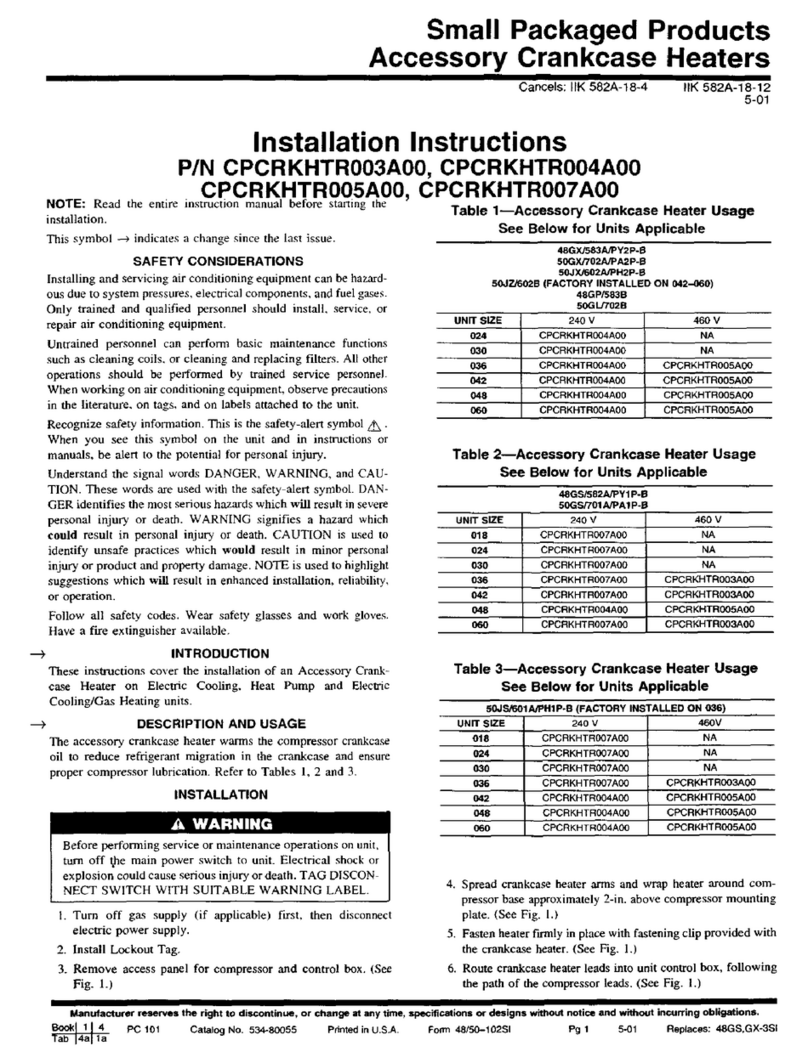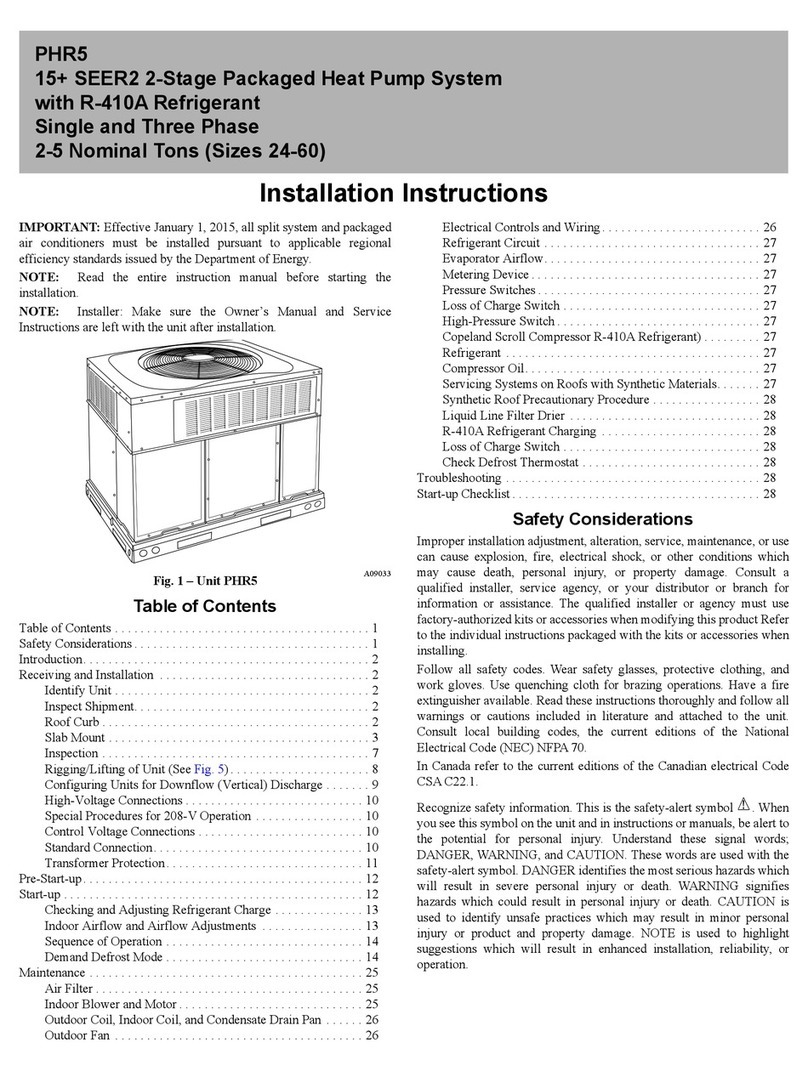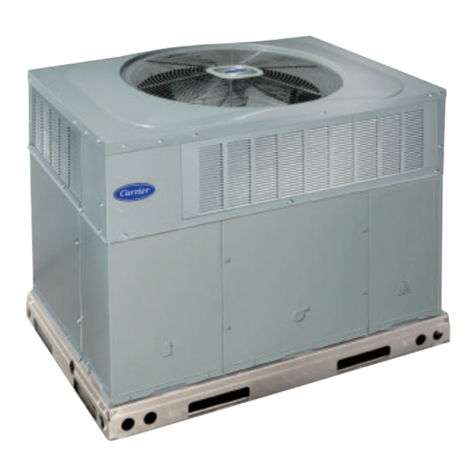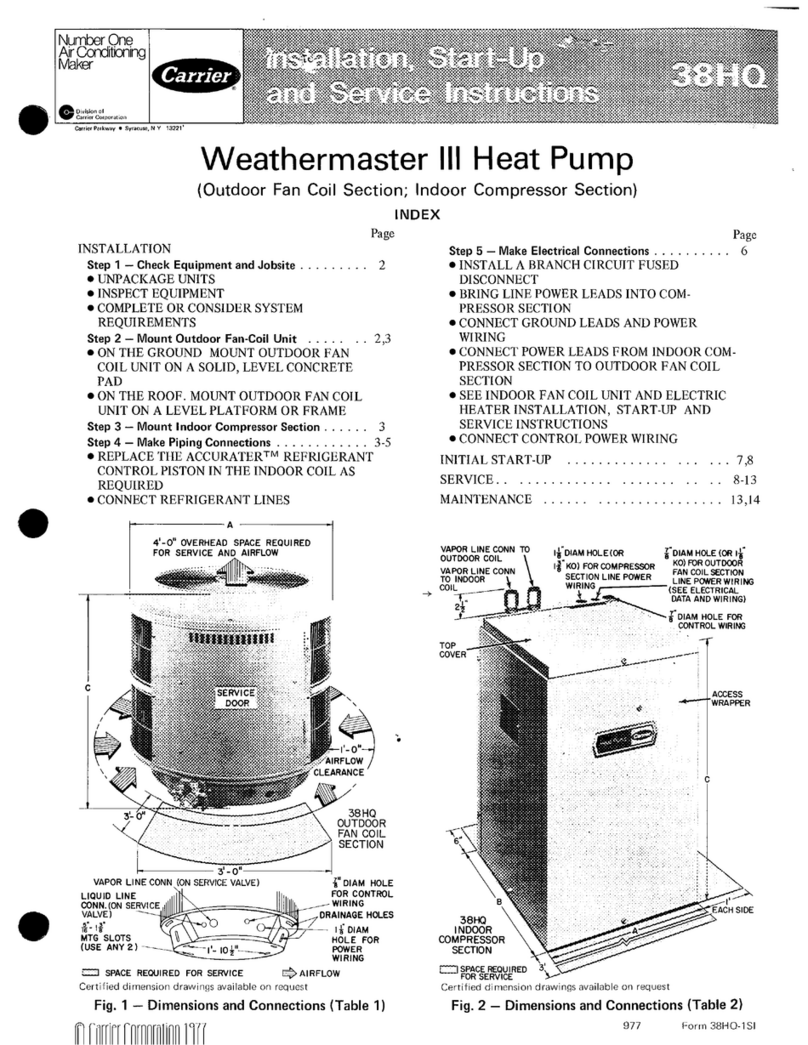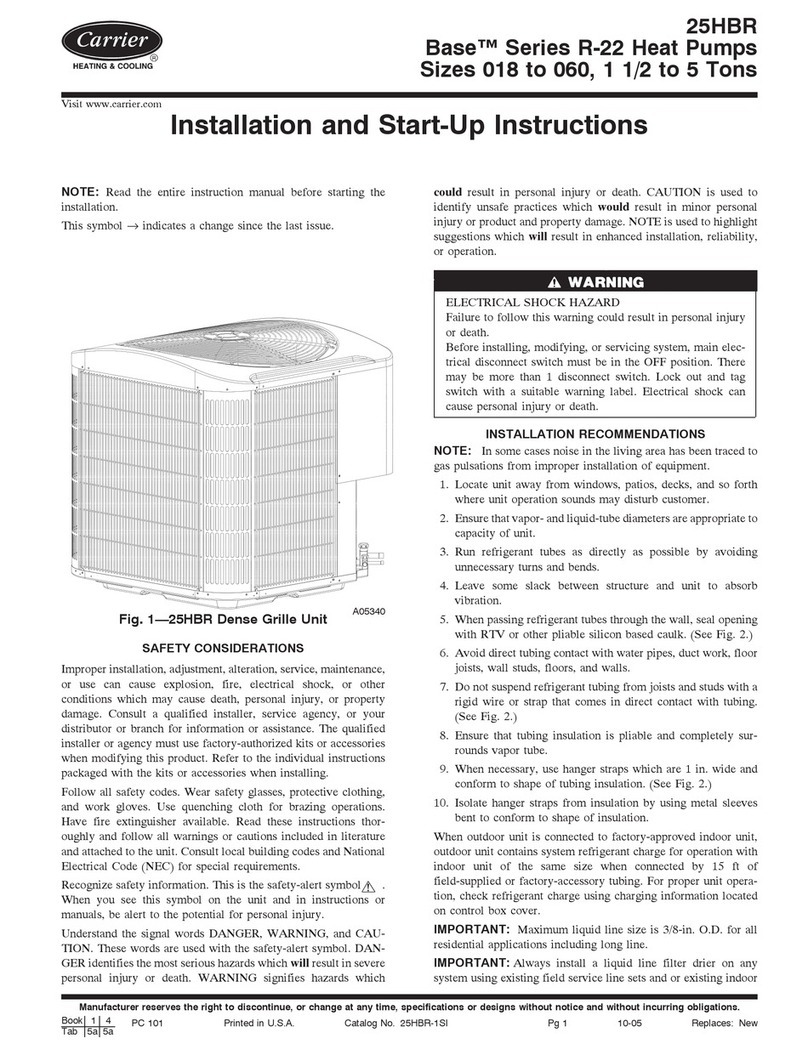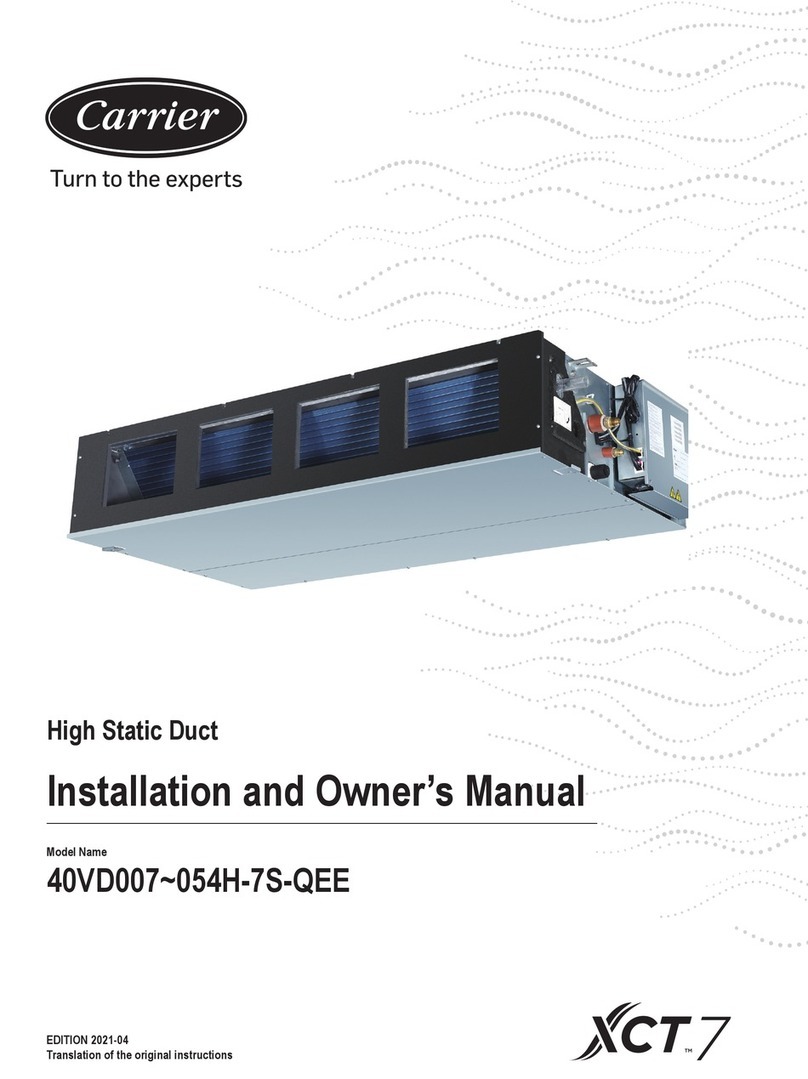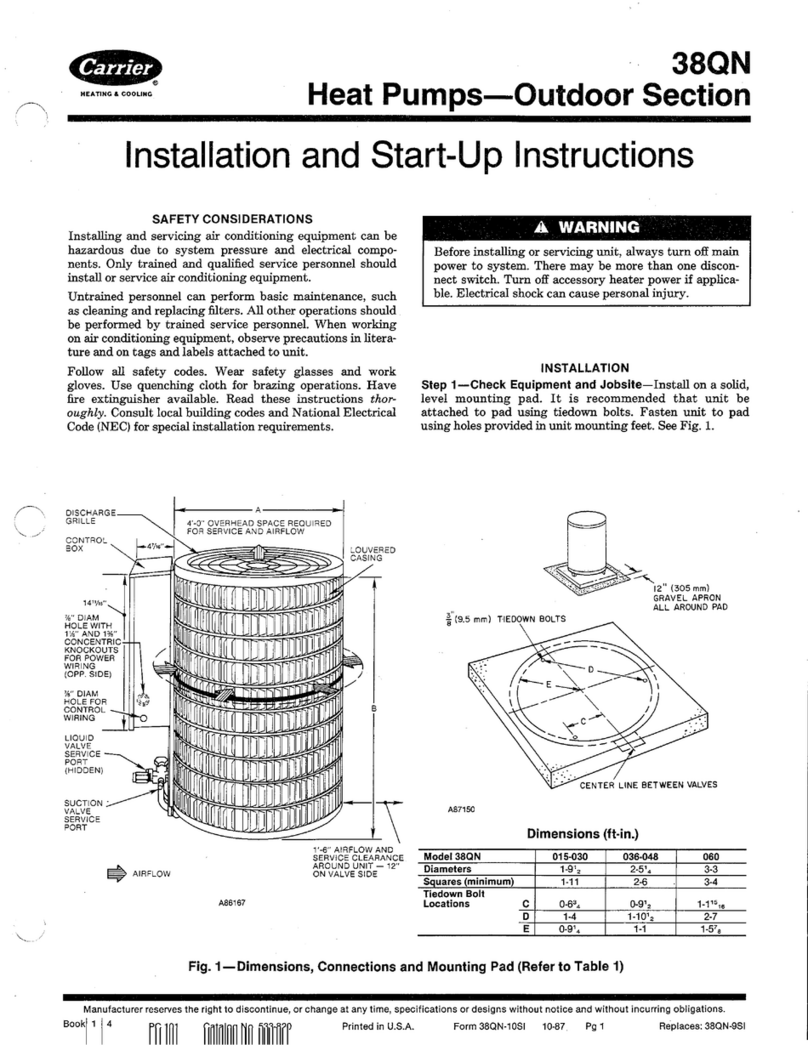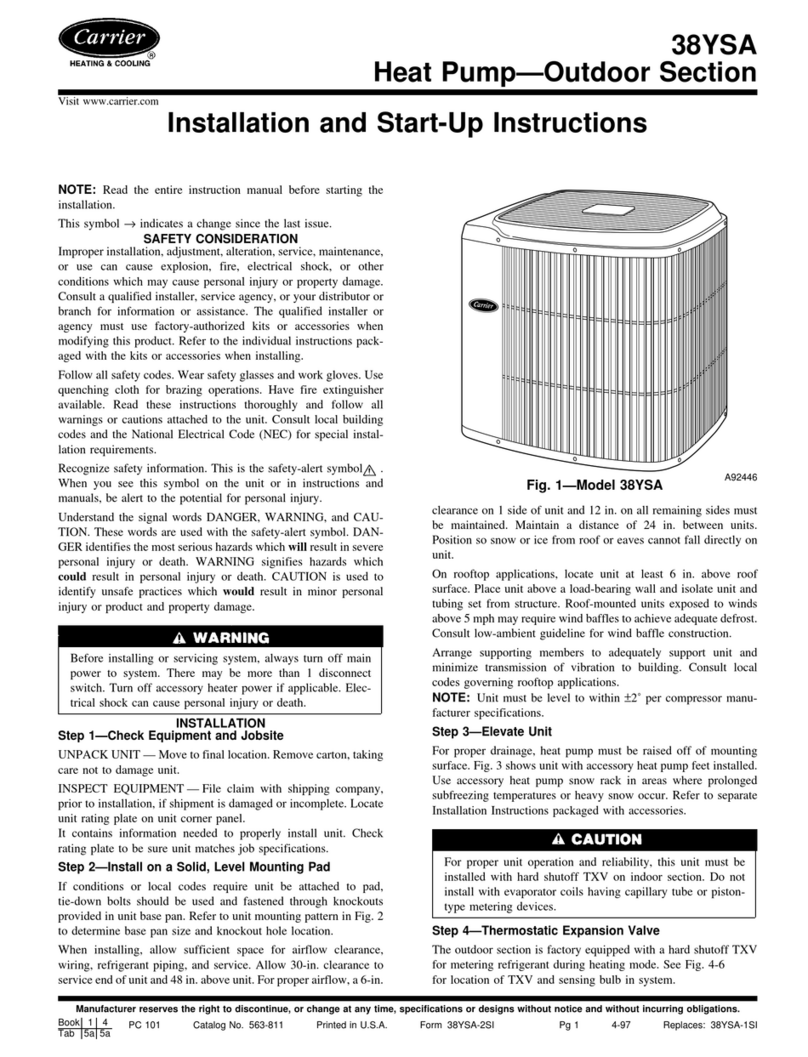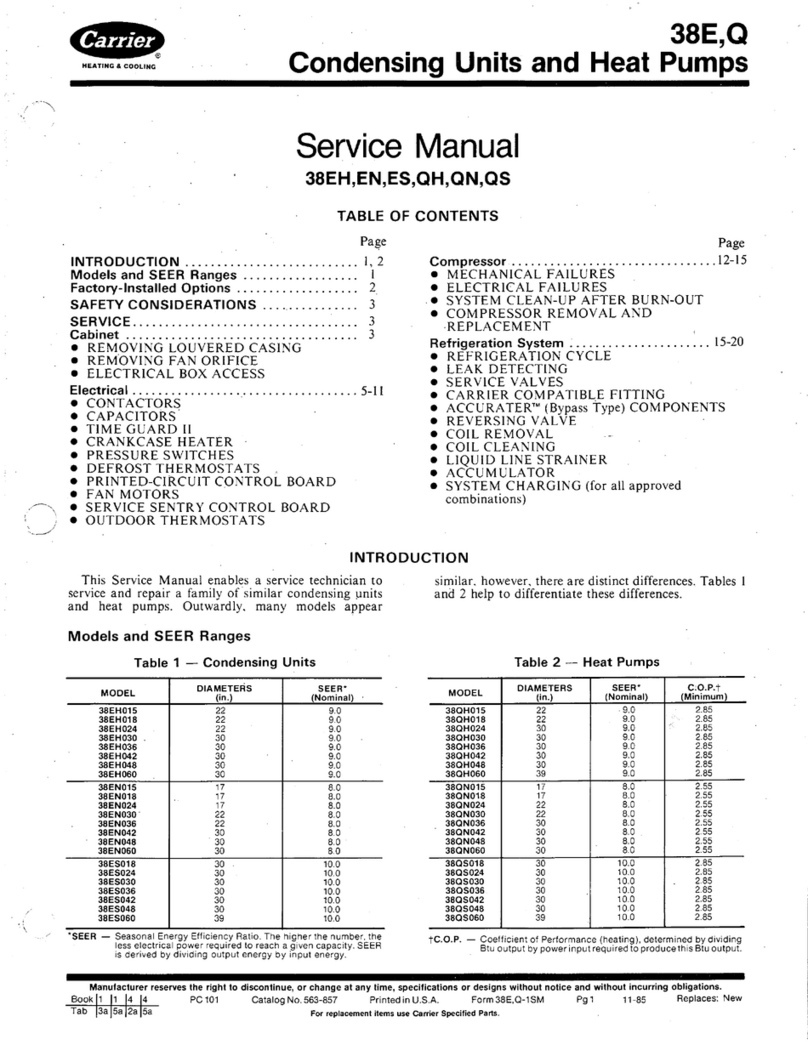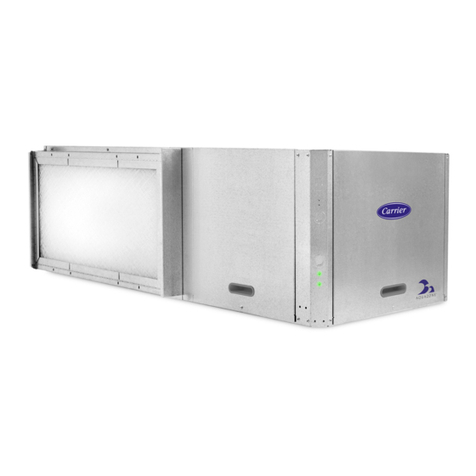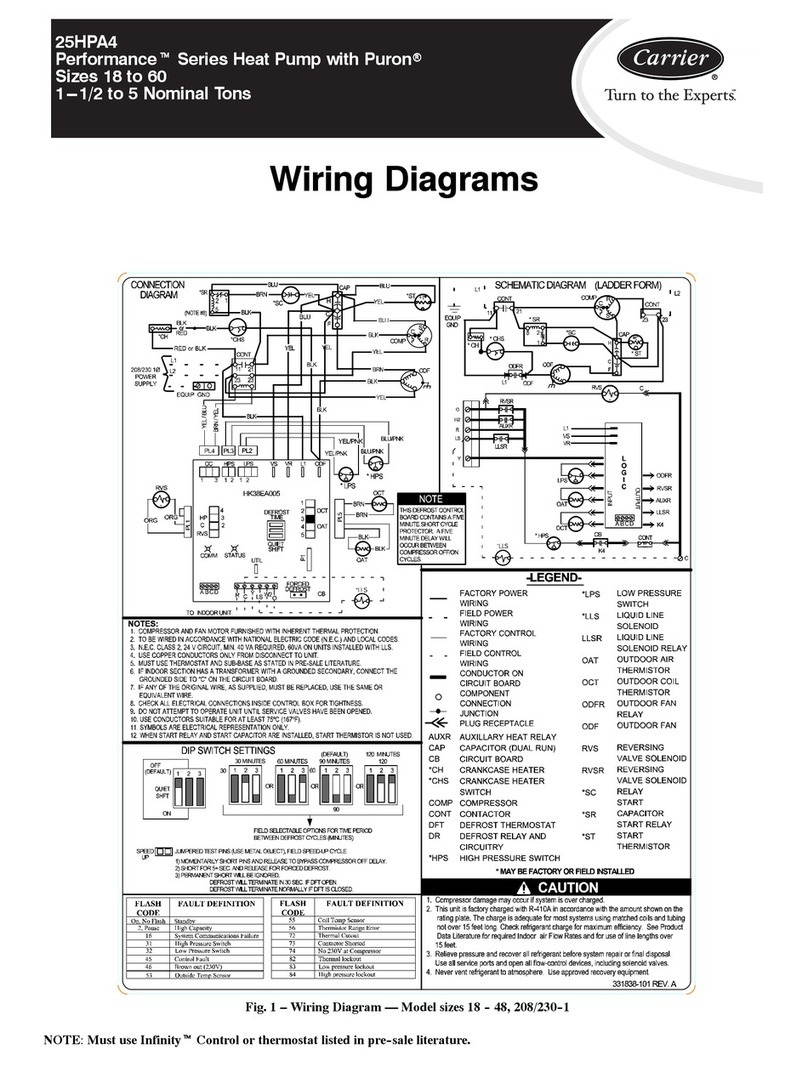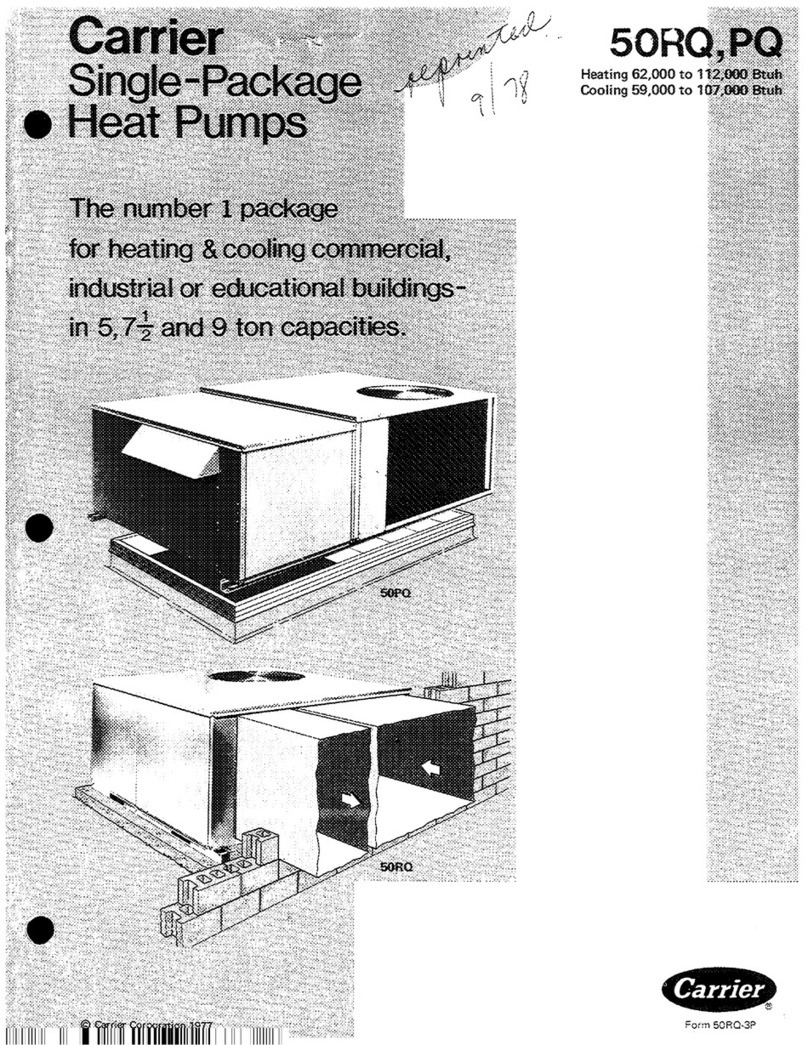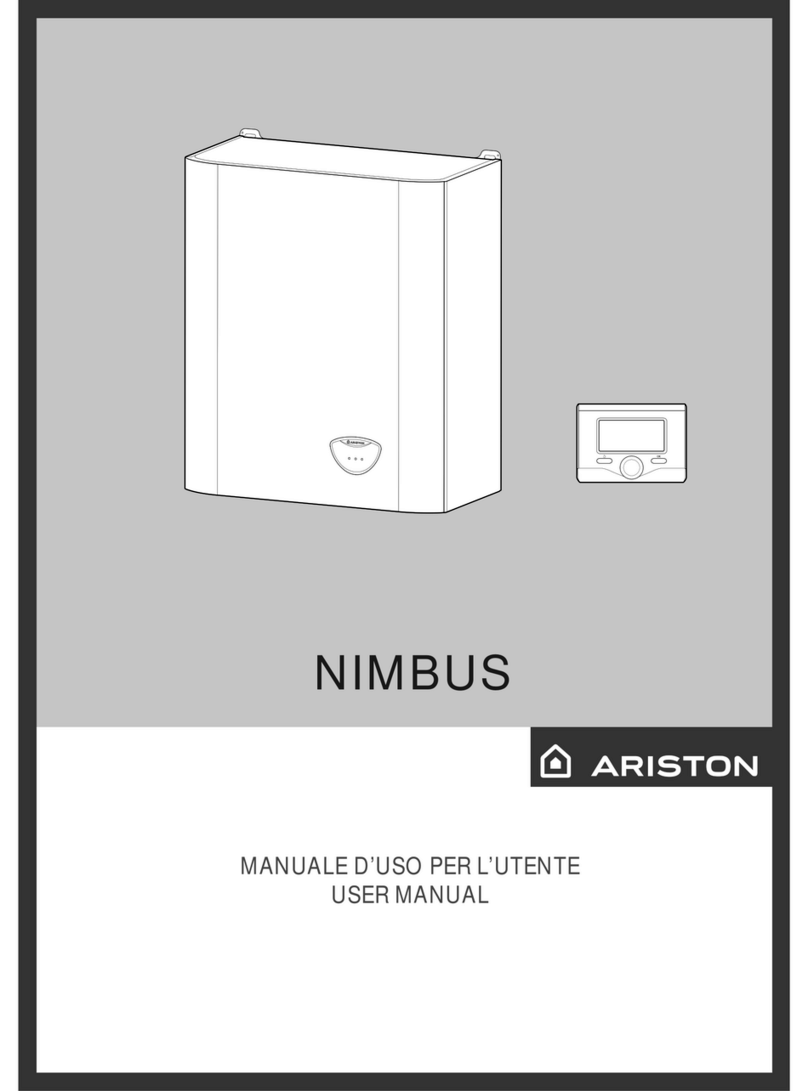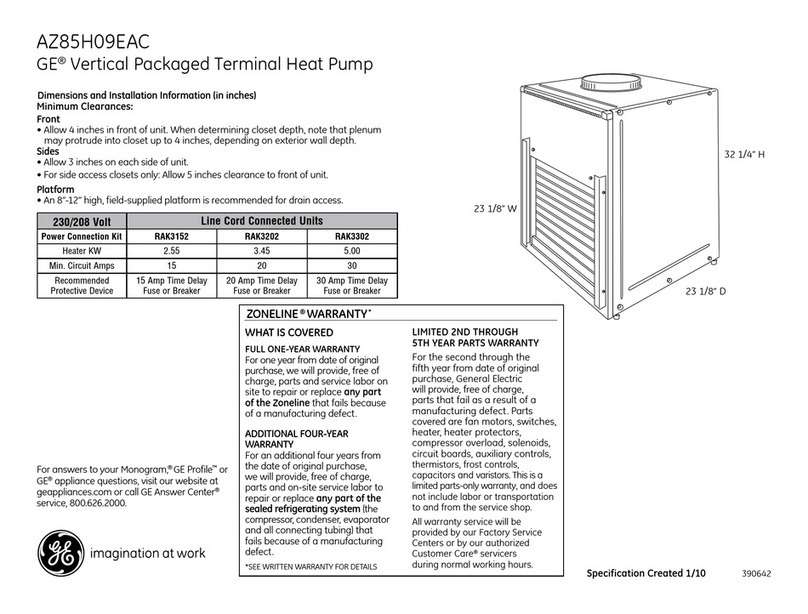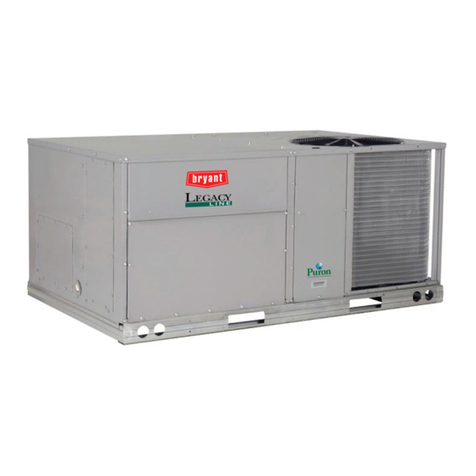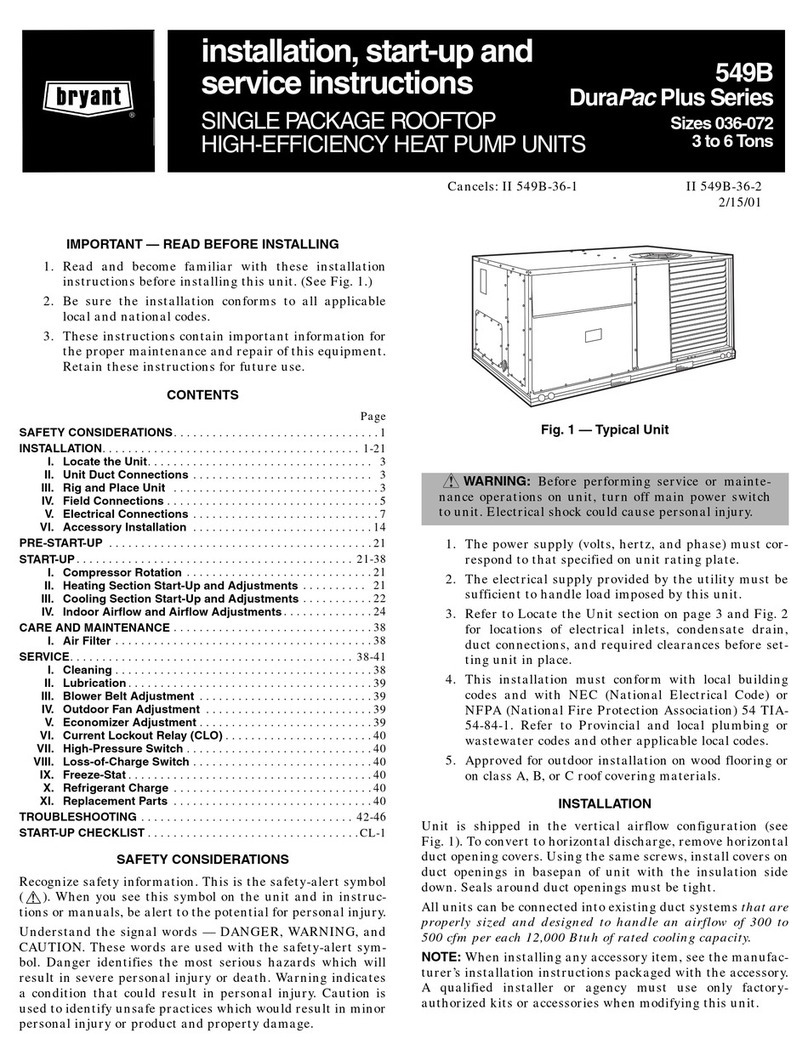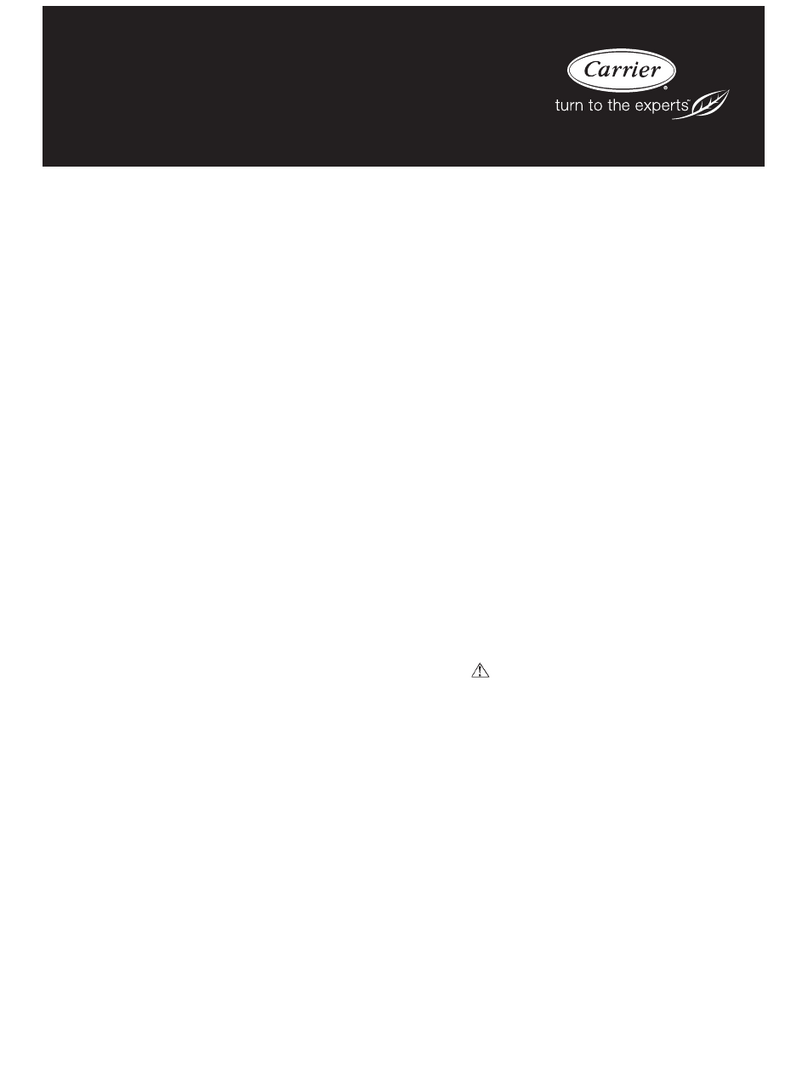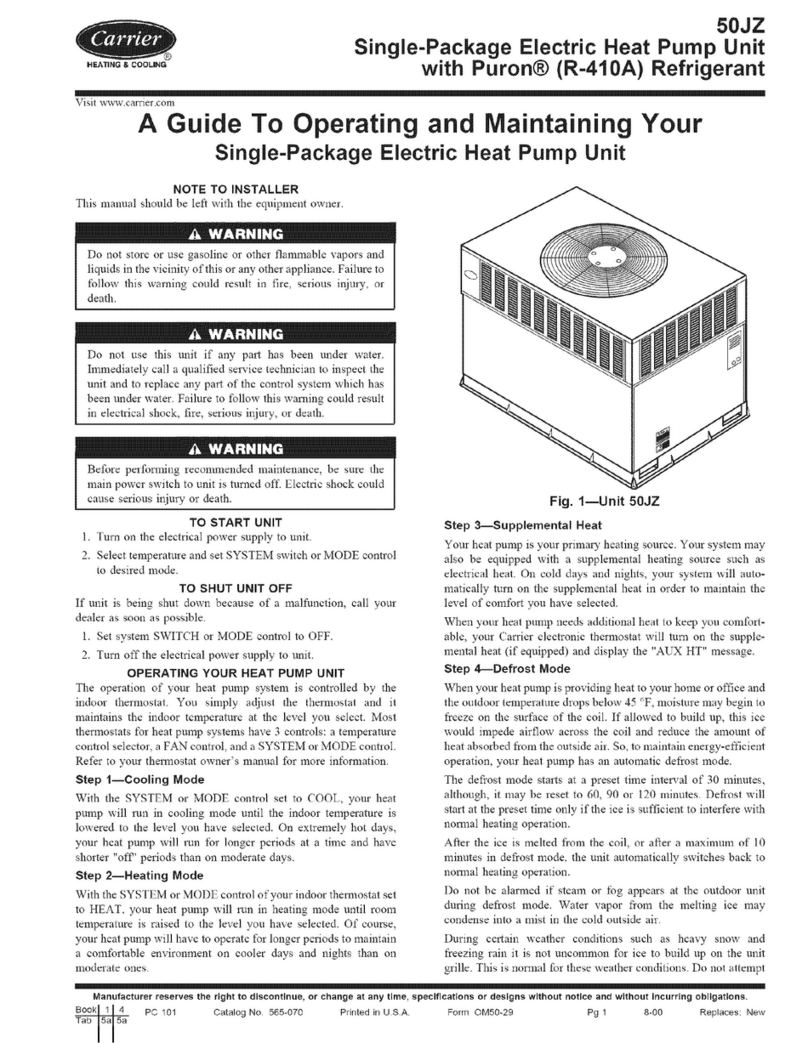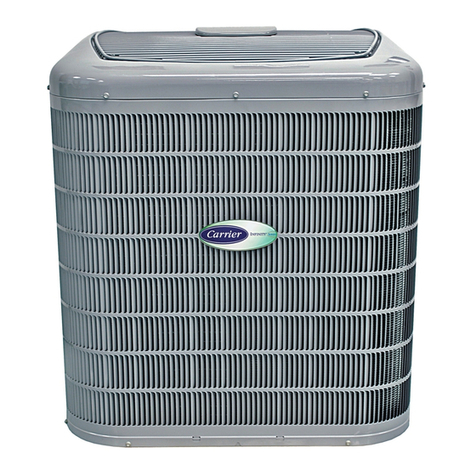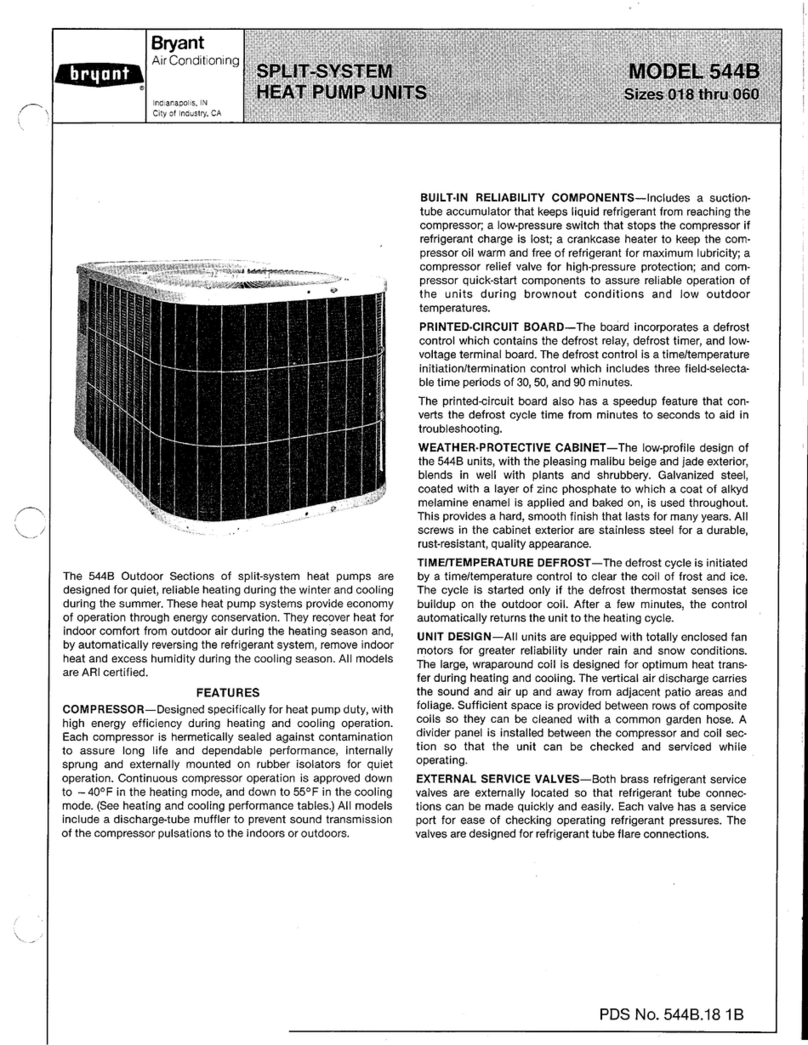
2
• FAN SPEED CONTROL - DURING HEATING
• FAN SPEED CONTROL - DURING COOLING
• MODULATING WATER ECONOMIZER CONTROL
• TWO-POSITION WATER ECONOMIZER CONTROL
• POWER FAIL RESTART DELAY
• SUPPLY AIR TEMPERATURE MONITORING/
CONTROL/ ALARM
• DEHUMIDIFICATION
• SPACE TEMPERATURE ALARMS
• CONDENSER WATER TEMPERATURE
MONITORING/CONTROL/ALARM
• HIGH CONDENSATE / OVERFLOW ALARM
• FILTER STATUS ALARM
• COMPRESSOR FAULT/LOCKOUT ALARM
• INSUFFICIENT VENTILATION ALARM
• RELATIVE HUMIDITY ALARM
• TIME SCHEDULES
• HOLIDAY SCHEDULES
• OVERRIDE SCHEDULES
SERVICE . . . . . . . . . . . . . . . . . . . . . . . . . . . . . . . . . . . 58
Filters . . . . . . . . . . . . . . . . . . . . . . . . . . . . . . . . . . . . . 58
Water Coil . . . . . . . . . . . . . . . . . . . . . . . . . . . . . . . . . . 58
Condensate Drain Pans . . . . . . . . . . . . . . . . . . . . . . 58
Refrigerant System . . . . . . . . . . . . . . . . . . . . . . . . . . 58
Compressor . . . . . . . . . . . . . . . . . . . . . . . . . . . . . . . . 58
Fan Motor Lubrication . . . . . . . . . . . . . . . . . . . . . . . . 58
Fan Bearing Lubrication . . . . . . . . . . . . . . . . . . . . . . 58
Condensate Drain Cleaning . . . . . . . . . . . . . . . . . . . 58
Air Coil Cleaning . . . . . . . . . . . . . . . . . . . . . . . . . . . . 58
Condenser Cleaning . . . . . . . . . . . . . . . . . . . . . . . . . 58
• GRAVITY FLOW METHOD
• FORCED CIRCULATION METHOD
Checking System Charge . . . . . . . . . . . . . . . . . . . . . 59
Refrigerant Charging . . . . . . . . . . . . . . . . . . . . . . . . . 59
Air Coil Fan Motor Removal . . . . . . . . . . . . . . . . . . . 59
TROUBLESHOOTING . . . . . . . . . . . . . . . . . . . . . . . . 60
• UNIT PROTECTION MODULE (UPM)
Freeze Protection Sensors . . . . . . . . . . . . . . . . . . . . 62
Thermostatic Expansion Valves . . . . . . . . . . . . . . . 62
• TXV FAILURE
SAFETY CONSIDERATIONS
Installation and servicing of air-conditioning equipment can be
hazardous due to system pressure and electrical components. Only
trained and qualified service personnel should install, repair, or
service air-conditioning equipment.
Untrained personnel can perform basic maintenance functions of
cleaning coils and filters and replacing filters. All other operations
should be performed by trained service personnel. When working
on air-conditioning equipment, observe precautions in the
literature, tags and labels attached to the unit, and other safety
precautions that may apply.
Improper installation, adjustment, alteration, service,
maintenance, or use can cause explosion, fire, electrical shock or
other conditions which may cause personal injury or property
damage. Consult a qualified installer, service agency, or your
distributor or branch for information or assistance. The qualified
installer or agency must use factory-authorized kits or accessories
when servicing or repairing this product. Refer to the individual
instructions packaged with the kits or accessories when installing.
Follow all safety codes. Wear safety glasses and work gloves. Use
quenching cloth for brazing operations. Have fire extinguisher
available. Read these instructions thoroughly and follow all
warnings or cautions attached to the unit. Consult local building
codes and the National Electrical Code (NEC) for special
installation requirements.
Understand the signal words — DANGER, WARNING, and
CAUTION. DANGER identifies the most serious hazards which
will result in severe personal injury or death. WARNING signifies
hazards that could result in personal injury or death. CAUTION is
used to identify unsafe practices, which would result in minor
personal injury or product and property damage.
It is important to recognize safety information. This is the safety-
alert symbol . When you see this symbol on the unit and in
instructions or manuals, be alert to the potential for personal
injury.
GENERAL
This Installation and Start-Up Instructions literature is for
Aquazone™ water source heat pump systems.
Water source heat pumps (WSHPs) are single-package vertically
or horizontally mounted units with a reversible refrigeration cy-
cle for year-round cooling and heating.
PRE-INSTALLATION
INSPECTION
Upon receipt of shipment, carefully check the shipment against
the bill of lading. Make sure all units have been received. Inspect
the carton or crating of each unit, and inspect each unit for damage
on both the interior and exterior. Ensure the shipping company
makes proper notation of any shortages or damage on all copies of
the freight bill. Concealed damage not discovered during unload-
ing must be reported to the shipping company within 5 days of re-
ceipt of shipment.
NOTE: It is the responsibility of the purchaser to file all necessary
claims with the shipping company.
STORAGE
IMPORTANT: Read the entire instruction manual before
starting installation.
WARNING
Electrical shock can cause personal injury and death. Shut off
all power to this equipment during installation and service.
There may be more than one disconnect switch. Tag all
disconnect locations to alert others not to restore power until
work is completed.
IMPORTANT: The installation of water source heat pump units
and all associated components, parts, and accessories which
make up the installation shall be in accordance with the
regulations of ALL authorities having jurisdiction and MUST
conform to all applicable codes. It is the responsibility of the
installing contractor to determine and comply with ALL
applicable codes and regulations.
CAUTION
EQUIPMENT DAMAGE HAZARD
DO NOT store or install units in corrosive environments or in
locations subject to temperature or humidity extremes (e.g., at-
tics, garages, rooftops, etc.). Corrosive conditions and high
temperature or humidity can significantly reduce performance,
reliability, and service life. Always move units in an upright
position. Tilting units on their sides may cause equipment
damage.
